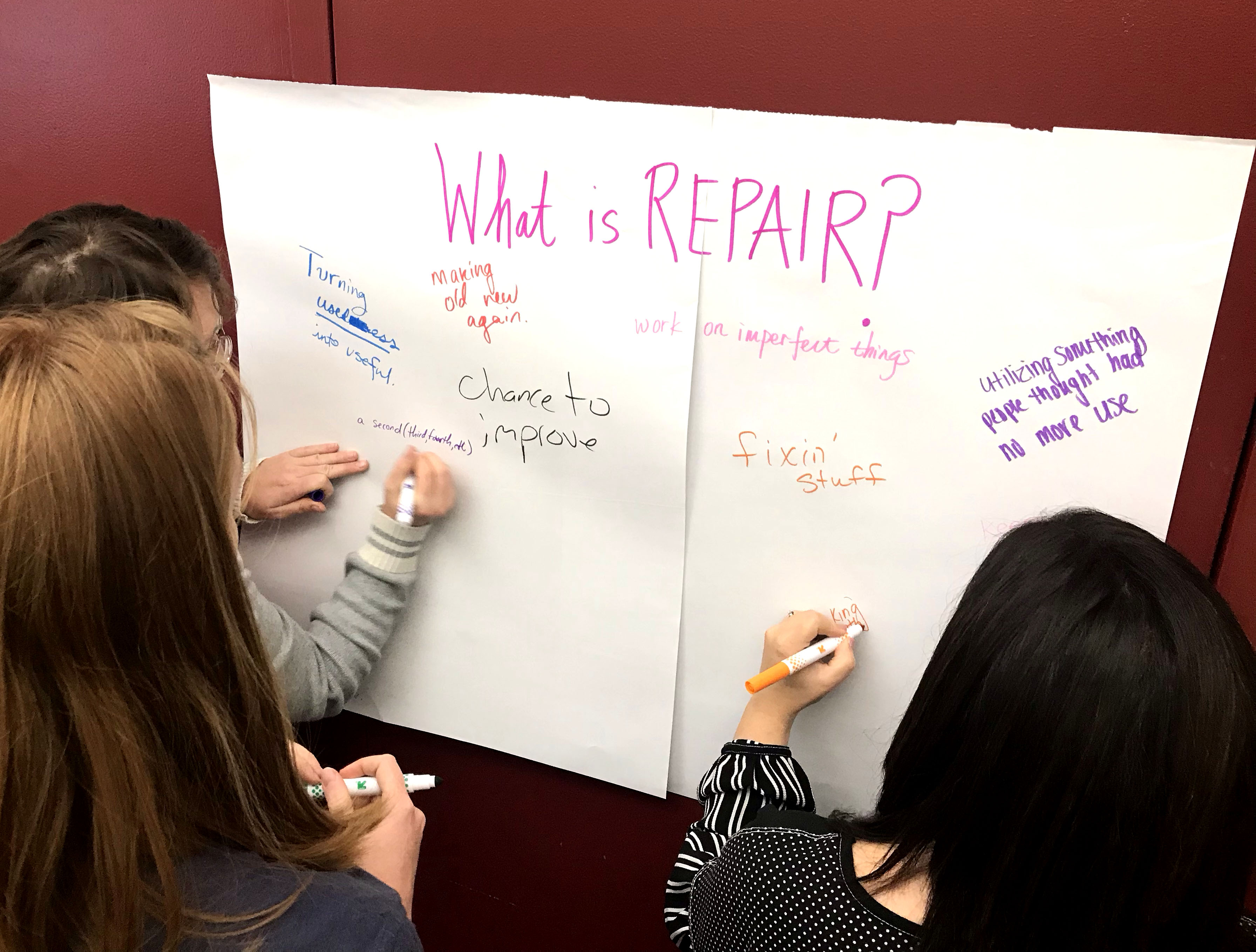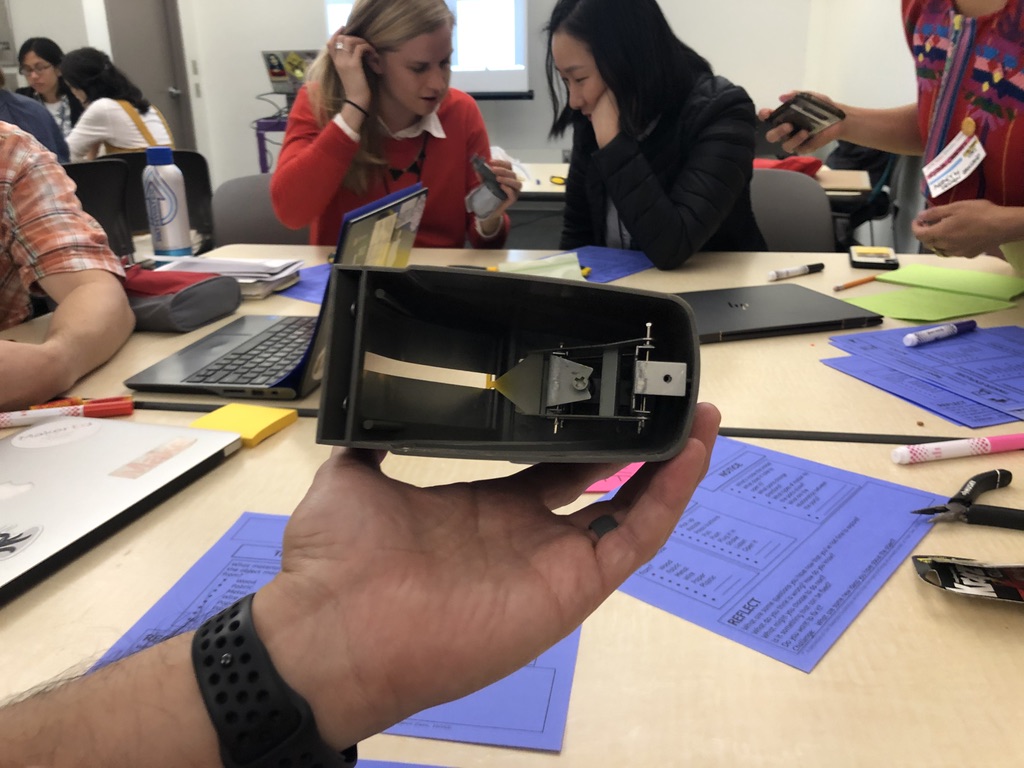
Over the past few months Agency by Design Oakland and Maker Ed have partnered with The Culture of Repair Project to consider how to ignite an interest in repair within maker-centered learning and the broader K-12 landscape. Our working group recently had the opportunity to present our repair research at the annual Maker Ed Convening. Participants engaged in storytelling and used adapted Agency by Design thinking routines while getting hands-on with “broken” objects.
Participants covered a range of ideas when asked:
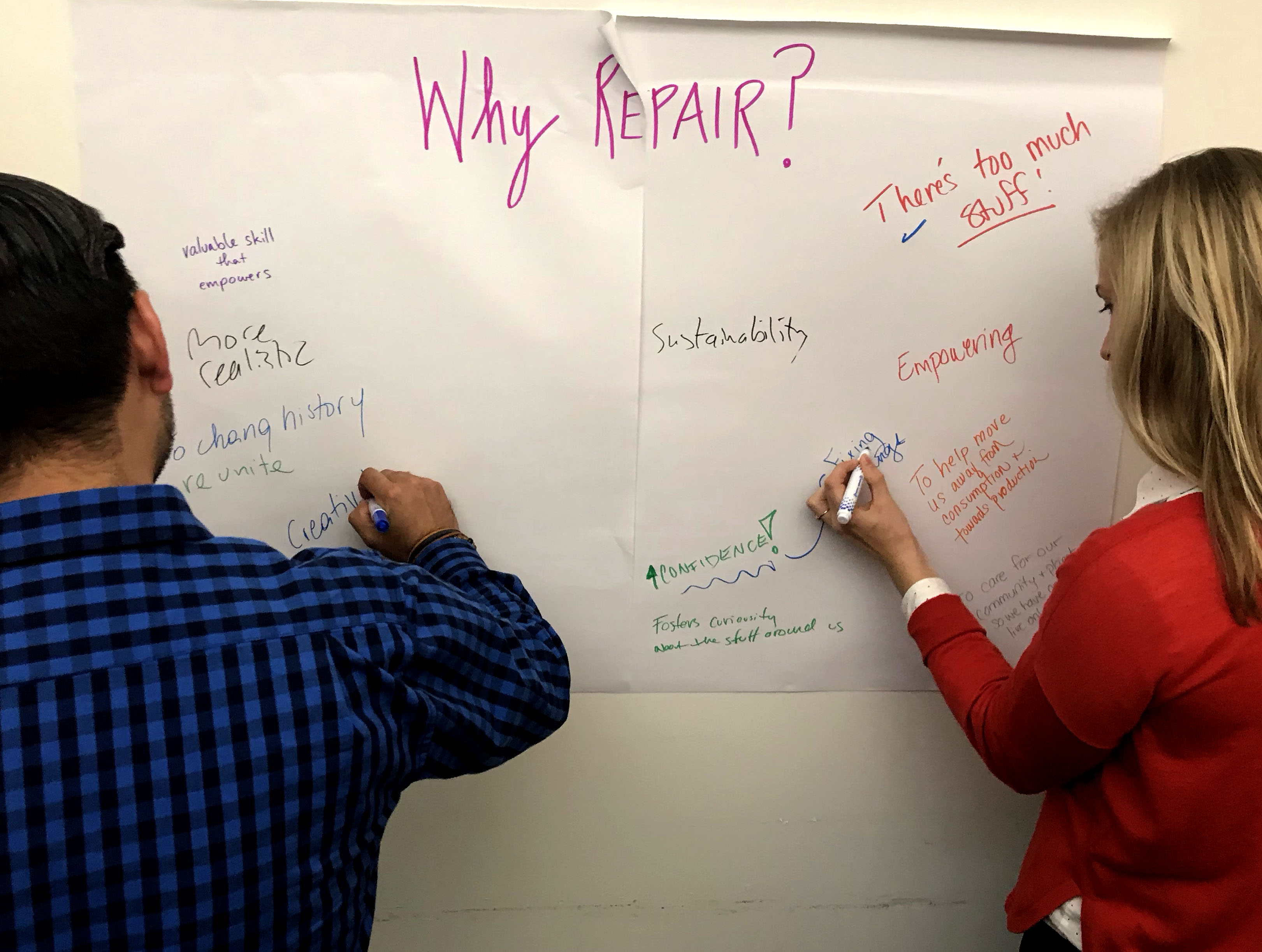 Why repair?
|
Although I personally have a ‘repair mindset’ and try to be ‘minimalist,’ your workshop showed me how I can encourage 900+ little ones and 900+ staff to do the same.”
— Workshop Participant
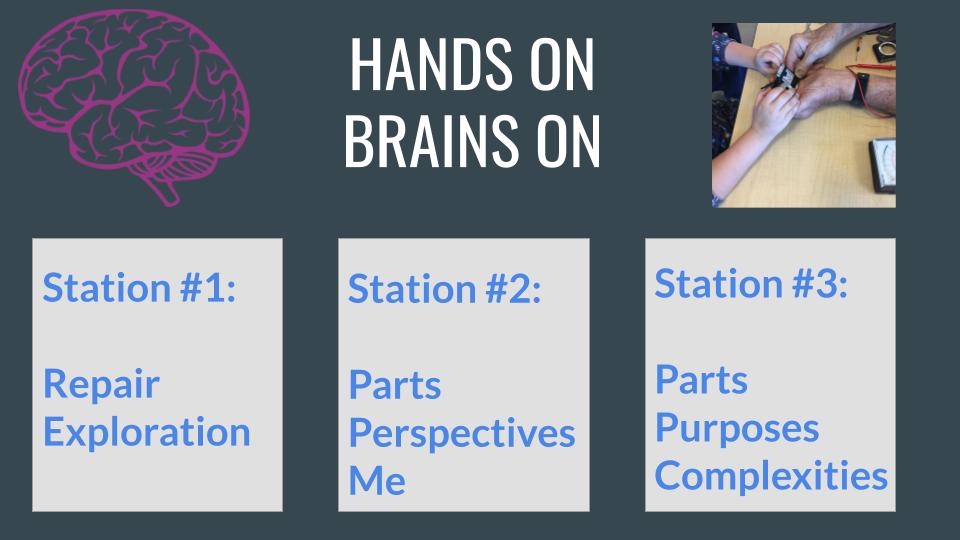
We’re teacher researchers, meaning we love to experiment, so we took advantage of the workshop forum to test out some adaptations to the Agency by Design thinking routines that we’ve been working on. The bulk of the workshop was spent trying out these adapted routines while getting hands-on with an object that appeared to need fixing. We will share these adapted versions in a Maker Ed Learning Module in the coming months. For now, please check out and use the originals from the Agency by Design research project, including Materials Exploration, Parts, Perspectives, Me, and Parts, Purposes, Complexities. They are at the core of our work and we highly recommend you use them as a routine in any learning context.
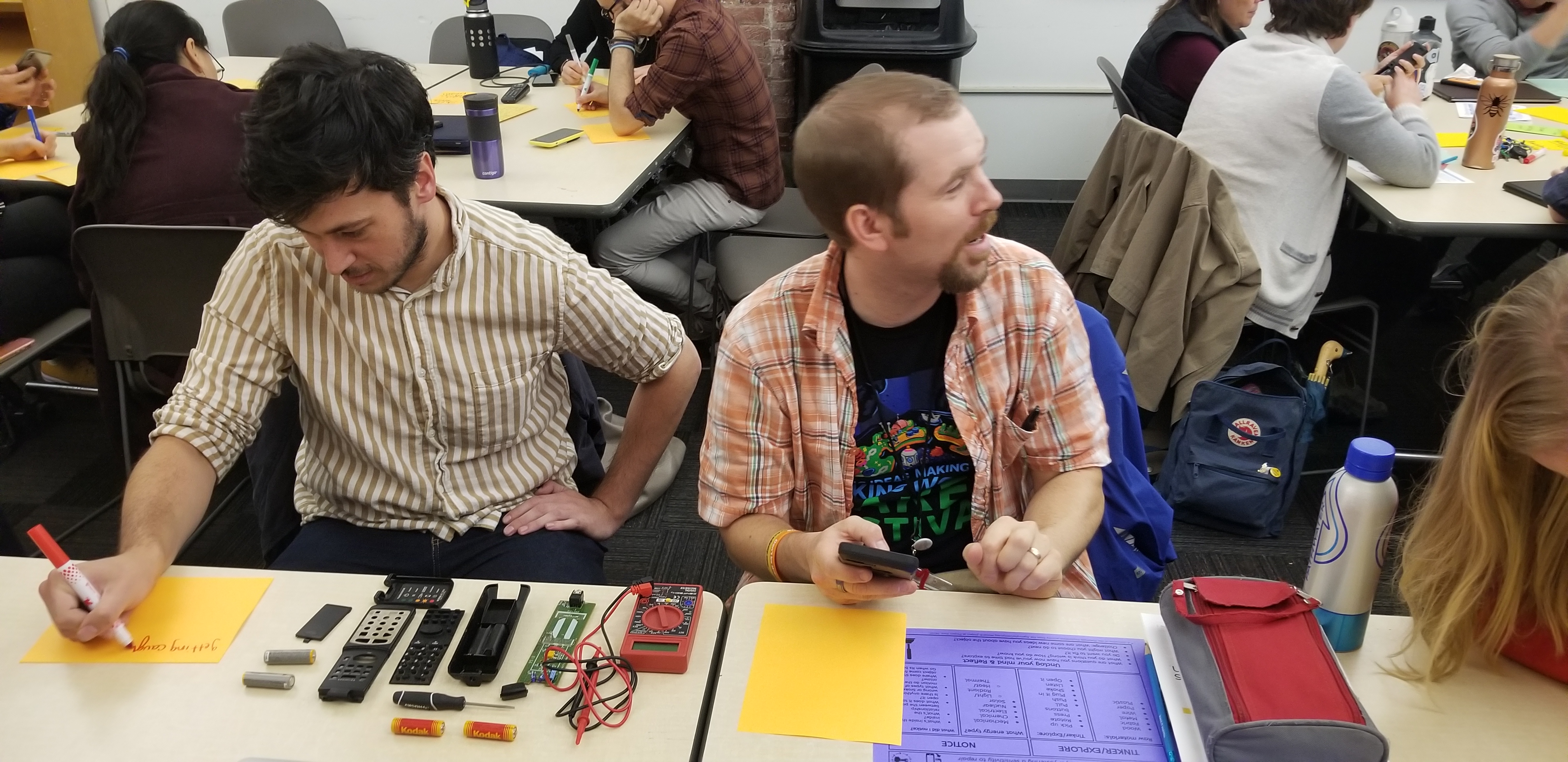
[This workshop] made me think about ecology and recycling, repurposing, and the importance of knowing how to repair everyday objects to be less dependent on consumerism.”
— Workshop Participant
What We’ve Learned So Far:
We know that the original Parts, Purposes, Complexities thinking routine is an elegant, powerful learning experience in which learners develop a sensitivity to design through looking closely and exploring complexity, both core capacities in developing maker empowerment. We also know that when using this routine, learner observations can lead to finding opportunity in improving the object’s design. However, we have found it doesn’t generally get us to concretely fixing an object.

So, we played around with some of the questions to try to direct learners in the right direction. We know from our interviews with repairers, as well as from our own experiences, that a core part of the repair process is problem-finding, which is also a part of the design thinking process. We experimented with simply adding the question “What is the problem?” preceding the other questions. We noticed, though, that when we asked the next question, “What are its parts?” that learners were looking at all of the object’s parts, most of which were not immediately involved in the repair. We then chose to narrow the question from “What are its parts?” to “What are the parts of the problem?” We left “What are its purposes?” alone, and adjusted the last question from “What are its complexities?” to “What is complex about the repair or fix?” with the sub questions: “What do you need to research? How do you repair it?”
Each of our groups had a teacher researcher from the working group observe the participants as they engaged in the routines and with the objects, and took notes on insights and noticings.
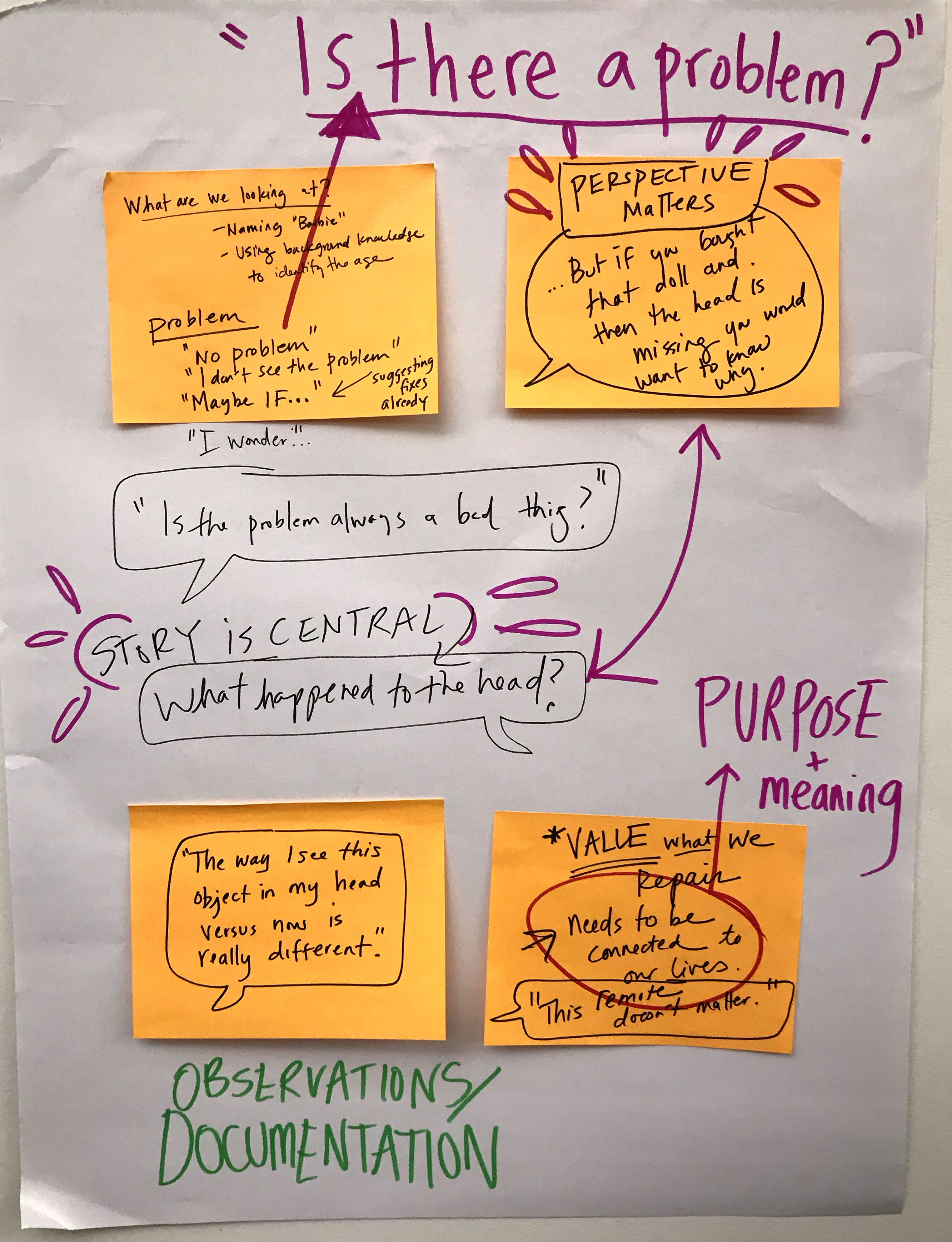
When trying out this adapted Parts, Purposes, Complexities routine, we learned that:
- Thanks to Yerko Sepulveda, a linguist and doctoral student, who attended our workshop, we learned that the word “problem” is a problem. Instead of being an open-ended prompt with the potential of deep learning, our question, “What is the problem?” makes an assumption, triggers a critical lens, and limits the potential for inquiry.
- We also learned that “problem” is subjective. For example, in the case of the doll missing its head, one participant observed, “If you bought that doll and the head is missing, you’d want to know why.” But others offered, “I don’t see a problem,” and proposed it could instead be a political statement on social norms.
- Story is Central: Again and again we have noticed that the story of the object and whether or not it’s meaningful to you, and worth the trouble of fixing, has become a central theme. (We’re working on another routine to go deeper here!)
As for the adapted Parts, Purposes, Complexities thinking routine, we’re back to the drawing board, making new adjustments and ready to experiment on our next participants. Hope we get the chance to experiment with you!
We are continuing to explore this topic within our research project, and will do so over the course of the next 6 months. In January, we will start to publish some of our resources and tools in a Learning Module on the Maker Ed website. Below are the research questions we are considering:
- How are we defining “Repair”?
- What are the key characteristics of having a “Repair Mindset”?
- What tools from the Agency by Design framework can be used or adapted to support the development of a Repair Mindset?
- What new tools or educational interventions can be developed to support cultivating a Repair Mindset in the K-12 setting?
About the Culture of Repair Working Group:
Our working group is a collective of six educators with different backgrounds, content expertise, and contexts, all connected to the Agency by Design Oakland Teacher Fellowship and research project.

We are, from left to right:
- Nga Nguyen, Teacher (Technology Art & Design, Math, Japanese) Wood Middle School, Alameda Unified School District
- Brooke Toczylowki, Curriculum & Instructional Coach, Oakland International High School, OUSD, & Executive Director, Agency by Design Oakland
- Susan Wolf, Artist & Arts Integration Specialist, ACOE & Coach, Agency by Design Oakland
- Paula Mitchell, Teacher on Special Assignment, Grass Valley Elementary School, OUSD & Fellowship Director, Agency by Design Oakland
- Reina Cabezas, Science Teacher, Sustainable Urban Design Academy, Castlemont High School, OUSD
- Aaron Vanderwerff, Director of Learning, Maker Ed
Resources in this Blog Post
Interested in learning more about incorporating maker centered learning in your classroom, library, museum, after school program, or makerspace? Explore our workshop offerings!
Also check out these online resources:
- Thinking Routines from Agency by Design, an ongoing research initiative at Project Zero investigating the promises, practices, and pedagogies of maker-centered learning experiences.
- The Culture of Repair Project

